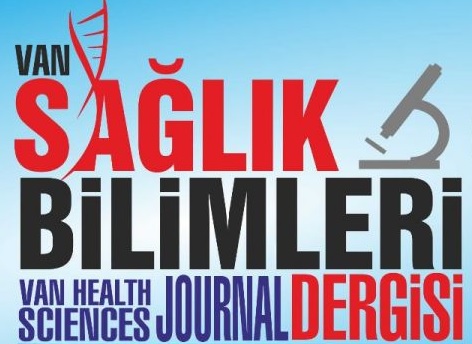Enhancing thermal comfort and indoor air quality through energy optimization with neural network
Indoor thermal comfort and air quality are essential for occupant well-being, while simultaneously optimizing energy consumption in buildings. Achieving a balance between these factors presents a significant challenge, as indoor environments are dynamic and energy demands fluctuate. By modifying ventilation rates in response to real-time data, demand-controlled ventilation systems can reduce energy consumption and enhance indoor comfort and air quality. However, optimizing these systems with advanced predictive models remains a complex task. To address this challenge, this publication proposes a Dual-Stream Multi-Dependency Graph Neural Network (DMGNN)-based energy-efficient ventilation management technique that maximizes indoor air quality and thermal comfort. The suggested method seeks to enhance thermal comfort and air quality by maximizing heating, ventilation, and air conditioning (HVAC) operations while reducing energy consumption. Initially data are collected from an Indoor Air Quality Monitoring Dataset. The DMGNN is employed to capture the complex dependencies between environmental factors such as temperature, humidity, and CO2 concentrations, considering both temporal and spatial relationships. Implementing the proposed system and evaluating it through simulations in various building environments demonstrates notable improvements in thermal comfort, indoor air quality, and energy economy. The suggested system’s performance is contrasted with that of other current methods, showing superior energy efficiency and optimization of both indoor air quality and occupant comfort. This study presents an innovative, scalable framework for smart building management, promoting sustainable energy solutions.
Tracking students' progress in introductory c programming courses through moodle tests with randomized questions
Assessing students' progress in introductory programming courses is crucial for identifying learning gaps and improving teaching methods. This study evaluates the effectiveness of Moodle-based tests with randomized questions in monitoring student progress in C programming courses at J. Selye University during the 2023/24 academic year. A series of ten tests were administered across two courses, covering essential programming topics such as data types, variables, conditional statements, loops, two-and three-dimensional arrays, recursion, and sorting algorithms. The results revealed significant variations in student performance, with recursion and the pretest/posttest loops presenting the greatest challenges. The correlation analysis of test scores showed strong relationships among related topics, confirming the structured progression of the curriculum. These findings suggest that Moodle-based assessments offer valuable insights into students' learning trajectories, enabling educators to adapt their instructional strategies accordingly. Such insights can help optimize introductory programming curricula, enhancing student engagement and understanding.
Low-impact exercises for improving symptoms in parkinson's disease: a literature review
Objective: This study fills an important research gap by focusing on the effectiveness of low-impact exercise in Parkinson's disease (PD), taking into account the different challenges faced by people with varying degrees of disease severity. Motivation: Unlike generic investigations into exercise and PD, our research prioritizes low-impact activities, considering safety concerns related to balance deficits and coordination challenges in the PD population. The study aligns with a patient-centred approach, aiming to provide a safer alternative to traditional exercise modalities. Approach: Conducting a comprehensive literature review, we conducted an online literature search on various databases, specifically investigating about low-impact exercises on both motor and non motor symptoms in PD individuals. Review process involved capturing diverse intervention types, durations, frequencies, and intensities. Findings: The amalgamation of diverse outcome measures, including UPDRS, Berg Balance Scale, TUG, 6MWT, and PDQ-39, showcased the multifaceted impact of low-impact exercises on both movement related and non-movement related symptoms. Notably, aerobic exercises being treadmill walking, cycling, and group sessions, emerged as pivotal interventions, demonstrating improvements in gait, balance, flexibility, and overall quality of life for PD individuals. Conclusion: While acknowledging limitations, such as potential publication bias and a focus on aerobic exercises, this study provides meaningful decision making information for clinicians and researchers. Future research should diversify interventions and methodologies to enhance the evidence base and address nuanced aspects of low-impact exercises in PD management. The results of this review contribute to the existing body of knowledge regarding the nuanced benefits of personalized low-impact exercise for Parkinson's disease.
Improving the performance of double-expansion chamber muffler using dielectric beads; optimization using factorial design
Purpose Noise pollution is a common health hazard worldwide which is emitted along with chemical air pollutants, simultaneously from many sources. Some studies have been conducted to control these pollutants, simultaneously with promising results being achieved. Dielectric beads have been used in air pollution control technologies, successfully and probable effectiveness of them in noise reduction can be promising in dual use of them in the exhausts emitting noise and air pollution, simultaneously. Methods In order to investigate the effectiveness of dielectric beads in noise reduction, two types of them; namely glass and ceramic beads, were placed separately inside the connecting tube of a double-expansion chamber muffler. Then the transmission loss (TL) of muffler was examined using impedance tube. A factorial design was used to evaluate and optimize the effect of noise related parameters on TL of such a system. Results Results show that the presence of dielectric beads has significant effect on TL of muffler. The maximum TL was obtained as 74.76 dB for muffler with ceramic beads, under the optimal condition of 5250 Hz and 120 dB. Measurement of TL and sound absorption coefficient (SAC) of glass and ceramic beads showed that the noise reduction in muffler with ceramic and glass beads is probably due to SAC in ceramic beads and noise reflections in glass beads, respectively. Conclusion These results promise the dual use of dielectric beads in the exhausts emitting noise and air pollution simultaneously.
Post-marketing quality assessment of paracetamol brands in the libyan market
Paracetamol is one of the most found over the counter drugs worldwide. It is widely used as an analgesic and antipyretic drug. Many commercial types of paracetamol tablets are available under different brand names in the Libyan drug market. The present study was conducted to evaluate post-marketing quality parameters for three brands of paracetamol tablets marketed in Libya. All three brands were evaluated for weight variation, hardness, friability, disintegration time and uniformity of content following British pharmacopeia guidelines. The outcomes of this study showed all tested brands complied with the British pharmacopeia specifications for the weight variation test, friability test (0.05%-0.17%), and hardness test (171.3N-197.6 N). In addition, two brands passed the British pharmacopeia requirements for the disintegration time test, whereas one brand exceeded the allowed disintegration time by about five minutes. Furthermore, high performance liquid chromatography was used to determine paracetamol content. Although the average amount of paracetamol drug available in these brands is not very close to 100%, where one brand achieved the lowest value (438.1 mg), the loaded dose of paracetamol in selected tablets in the three brands was within the British pharmacopeia standard specifications for the uniformity content test. Therefore, it can be concluded that almost all the three tested brands of paracetamol tablets that are available in the Libyan drug market meet the British pharmacopeia specification for quality control analysis.
 Mediterranean journal of pharmacy and pharmaceutical sciences
Mediterranean journal of pharmacy and pharmaceutical sciences
Personnel department is the predominant component of hrd unit of north eastern karnataka road transport corporation (nekrtc), though hrd has been identified and designated as a separate department. basically the existing personnel department is quali
Development of Human Resources is being given due importance by all the organizations as it aims at developing all the employees of an organization in a planned manner to acquire, sharpen and apply their existing capabilities as well as their inner potentials. HRD is a total system in which its various mechanisms are embedded together to act as an integrated unit. No sub-system can work in isolation. The researches show that the working of each sub-system has its impact on other subsystems e.g. Performance appraisal is basis for assessing training needs, career planning etc. Training is useful tool for increasing individual efciency. It is also a part of employee welfare and is used for promotions. Implementing these HRD sub-systems helps in developing a climate in the organization where the people collaborate with each other; respect and trust others and work as a team. This, in turn, develops a highly positive and motivated workforce which enables the organization to achieve its goals. Human being is a creature composed of heredity and environment and creates values for their own. In the context, during the interactions with others, the values manifest spontaneously. Human beings are tempted by all kinds of emotions, impulses, instincts, prejudices, wishful thinking, hopes, fears, desires, and almost everything.
Using common medicinal plants to treat high blood pressure: an updated overview and emphasis on antihypertensive phytochemicals
The primary cause of many fatalities is hypertension (high blood pressure). Many hypertensive patients are not even aware that they have the condition. As a result, hypertension is sometimes referred to as a silent killer. Until the harmful effects of high blood pressure, such as myocardial infarction, stroke, renal abnormalities, and vision problems, are identified, hypertension is typically asymptomatic. Without the use of herbs and dietary control, conventional medication therapy could not be enough to treat hypertension. The growing number of persons with high blood pressure can be effectively treated using alternative medicine. Numerous alternative therapies, such as diet, exercise, stress management, vitamins, and herbs, have been proven to be effective in lowering high blood pressure. There are several medications available to treat this disorder however popular antihypertensive medications typically have a long list of adverse effects. Numerous active ingredients with pharmacological and preventative qualities found in medicinal plants can be used to treat hypertension. This review discusses an overview of important medicinal plants and phytochemicals with hypotensive or antihypertensive effects.
 Mediterranean journal of pharmacy and pharmaceutical sciences
Mediterranean journal of pharmacy and pharmaceutical sciences
Economic and health damages from inadequate sanitation: experience from rural villages
Poor water quality and lack of access to improved sanitation continue to pose a significant threat to human health. The burden of disease analysis suggests that lack of access to safe water supply, sanitation and hygiene is the third most significant risk factor for poor health in developing countries with high mortality rates. Diarrhoea is the leading disease associated with unsafe water supply, sanitation and hygiene and is responsible for the deaths. The study observed that out of the 150 respondents, 37% are 31-40 years, followed by 20-30 years with 32%. 130 (86.7%) respondents have got married, and 61% of the respondents are female. 85% adopted the nuclear family system, and 50% of respondents are illiterates in the study areas. 85% of respondents are daily wage earners, 37%are earnings rupees between 2000-2500 per month. 27% of respondents are landless labours, and 37% of households possess below 2 acres of land. 40% of respondents suffer from health problems, and 44% consume rice as their staple food. 62% of respondents have debts, and 33% got from money lenders. 62% of respondents do not have toilet facilities and go open defecation. 92% of respondents stated that toilet makes dignity, saves time and energy, saves their children school days, makes adolescent girls privacy, save wage loss, and toilet makes quality life.
Liposomes for drug delivery - liposomes
Liposomes are a novel drug delivery system (NDDS), they are vesicular structures consisting of bilalyers which form spontaneously when phospholipids are dispersed in water. They are microscopic vesicles in which an aqueous volume is entirely enclosed by a membrane composed of lipid bilayers. NDDS aims to deliver the drug at a rate directed by the needs of the body during the period of treatment and direct the place of action. Liposomes are colloidal spheres of cholesterol non-toxic surfactants, sphingolipids, glycolipids, long chain fatty acids and even membrane proteins and drug molecules or it is also called vesicular system. It differs in size, composition and charge and drug carrier loaded with variety of molecules such as small drug molecules, proteins, nucleotides or plasmids etc. Few drugs are formulated as liposomes to improve their therapeutic index. Hence a number of vesicular drug delivery systems such as liposomes, niosomes, transfersomes and pharmacosomes are developed. The focus of this chapter is to the various method of preparation, characterization of liposomes, advantages and applications, etc. Liposomes for Drug Delivery - liposomes
Detection of rotavirus and enteric adenovirus frequency in children with acute gastroenteritis attending to our hospital: a sivas-scale retrospective study
Objectives: Viral gastroenteritis is a major health problem that is common worldwide, especially in developing countries, and is responsible for the majority of childhood diarrhea disease. The aim of this study was to determine prevalence of rotavirus and enteric adenovirus frequency and the age and seasonal distribution of viral agents in children with acute gastroenteritis attending to our hospital. Materials and Methods: In this study, 6999 stool specimens were investigated for the presence of rotavirus and adenovirus. The samples were obtained between January 2013 and August 2019 from children age 0-17 suffering from acute gastroenteritis attending to our hospital. Frequency of rotavirus and adenovirus were retrospectively evaluated with regard to seasonal distribution, gender and age of patients. Results: Viral antigens were detected in 1341 (19.1 %) of the specimens examined in the study. Among the positive results, rotaviruses and adenoviruses frequency were detected in 14.7 %, 4.4 %respectively. Rota-adenovirus co-infection was 8.4 %(n=113). Whereas rotavirus antigen was determined in all age groups, the highest was found in children age 0-2 with a rate of 57.9 %. Moreover, considering the seasonal distribution of the cases, it can be said that rotavirus infections are mostly observed in winter and spring, while adenovirus infections are frequently detected in summer and autumn. Conclusion: Rotavirus and enteric adenovirus infections are important public health problems that caused hospitalization, morbidity and mortality among children <5 years children in our country. As well as an approach to prevention of acute gastroenteritis, it is very important to detect the agent correctly and quickly for the treatment approach.
Draft genome sequences of three rhizospheric plant growth- promoting bacteria
Here, we report the draft genome sequences of Bacillus subtilis A1, Sphingobacterium sp. strain A3, and Pseudomonas sp. strain A29; Sphingobacterium sp. A3 and Pseudomonas sp. A29 were identified as Bacillus velezensis strain A3 and Bacillus subtilis strain A29, respectively, after a quality control check of the wholegenome sequences deposited in the NCBI database. These bacteria exhibit tremendous production of siderophores and significant antimicrobial potential. When inoculated on maize, these isolates increase its yield
Anti-emetic activity of some leguminous plants
Crude methanol extracts of the leaves of Adenanthera pavonina L., Peltoforum roxburghii L, Prosopis cineraria L., and Prosopis juliflora DC., were evaluated for anti-emetic activity. Emesis was induced by the oral administration of copper sulphate 50mg/kg body weight to male chicks of four days age. The anti-emetic activity was determined by calculating the mean decrease in number of retching in contrast with those of control. All extracts (150 mg / kg body weight orally) showed anti-emetic activity when compared with standard drug Chlorpromazine at the same dose. Among all the extracts, Prosopis juliflora showed the highest (73.64%) and Adenanthera pavonina showed the lowest (50.17%) anti-emetic activity
Pyrazole carbaldehyes as antiinflammatory agents-synthesis and in vitro membrane stabilization method
Pyrazole is a nitrogen containing 5-membered heterocyclic compound containing 3 carbons& 2 nitrogen atoms in the adjacent position of ring structure and is chemically known as 1, 2- diazole. Pyrazole nucleus is present in many pharmaceutically important compounds and intermediates . Majority of anti-inflammatory agents currently employed have GI irritation and enhanced acidity as side effects. As part of our efforts to develop newer and effective anti-inflammatory agents , ten newer pyrazole carbaldehydes were synthesized and evaluated for their anti-inflammatory activity using Diclofenac was the standard. Out of ten compounds synthesized, all compounds exhibited comparable activity with that of the standard.Highest percentage of haemolysis was observed for Pyrazole carbaldehydes with methoxy phenyl groups as substituents. These compounds should be considered for developing as leads for newer & safer anti-inflammatory agents.
Pdf - attention is all you need
The dominant sequence transduction models are based on complex recurrent or convolutional neural networks that include an encoder and a decoder. The best performing models also connect the encoder and decoder through an attention mechanism. We propose a new simple network architecture, the Transformer, based solely on attention mechanisms, dispensing with recurrence and convolutions entirely. Experiments on two machine translation tasks show these models to be superior in quality while being more parallelizable and requiring significantly less time to train. Our model achieves 28.4 BLEU on the WMT 2014 Englishto-German translation task, improving over the existing best results, including ensembles, by over 2 BLEU. On the WMT 2014 English-to-French translation task, our model establishes a new single-model state-of-the-art BLEU score of 41.0 after training for 3.5 days on eight GPUs, a small fraction of the training costs of the best models from the literature.
Design and analysis of a scooping engine valve
Inlet valve in an engine tends to be subjected to immense thermal loads besides chemical corrosion. Opening and closing of inlet valve practically could be in the order of 2000 times per 1.6 km. In the mean time of engine working cycle, seat insert of the inlet valve is the surface, against which an intake valve seats. Conventional engine valves are provided with a curved angle for its seating position, but for this study, the same is proposed to be positioned at a tapered angle. This tapered position as converted into radius in order to permit rich air at the inlet and reduce exhaust emission. This study is to investigate the nature of the future redesigned Scooping valve for a 1.25L 4-cylinder Petrol engine with VTVT (Variable Timing and Valve Train) under combined mechanical and thermal loading cycle by feeding the input conditions for this study after NX-CAD modelling in ANSYS 10.0 software and the numerical results thus obtained are recorded for future valve design considerations.
Faktor-faktor kesulitan belajar matematika siswa madrasah ibtidaiyah da’watul falah kecamatan tegaldlimo kabupaten banyuwangi
Salah satu mata pelajaran yang dianggap sulit oleh siswa adalah matematika. Sehingga pelajaran ini kurang diminati siswa. Permasalahan inilah yang menyebabkan banyak siswa mengalami kesulitan belajar matematika. Rumusan masalah dalam penelitian ini yaitu: Kesulitan Belajar Matematika Siswa MI Da’watul Falah Kecamatan Tegaldlimo Kabupaten Banyuwangi Tahun Pelajaran 2018/2019? Sedangkan tujuan penelitian ini adalah untuk mendeskripsikan kesulitan belajar matematika siswa MI Da’watul Falah Kecamatan Tegaldlimo Kabupaten Banyuwangi. Penelitian ini menggunakan pendekatan kualitatif dengan jenis penelitian fenomenologi. Subjek penelitian dalam penelitian ini menggunakan purposive sampling. Teknik pengumpulan data yang digunakan adalah observasi, wawancara, dan dokumentasi. Sedangkan analisis data menggunakan model analisis Miles, Huberman dan Saldana yaitu data Condensation, data Display, serta Conclusion drawing/verivication. Adapun pengecekan keabsahan data yang digunakan adalah triangulasi sumber dan triangulasi teknik. Hasil penelitian ini menunjukkan bahwa kesulitan belajar matematika siswa disebabkan salahnya mindset yang dibangun dari awal oleh siswa, sehingga mereka kesulitan dalam memahami materi yang diajarkan di kelas. Adapun faktor-faktor yang menyebabkan kesulitan belajar terdiri dari faktor internal dan faktor eksternal.
Effect of initial weight of chicks on performance of iraqi local chickens
The objective of this research was to investigate the effect of initial chick weight at the first day of the hatch on subsequent performance of Iraqi local chickens. 150 unsexed chicks of local chickens weighted at first day of hatch then divided to five groups (A, B, C, D, E) according to the initial weight (26.4, 31.89, 36.38, 41.09, 46.91) gm, the birds were reared in a wooden cage consist of individual compartments with dimensions (30×30×40) cm, The feed and water was available adlibitum, The birds and feed weighted weekly by sensitive balance. The result shows that initial weight had a significant effect on body weight, weight gain, feed and protein consumption, and growth rate but not significant on feed and protein conversion, where group E showed the best results, The relationship between initial body weight and productive traits were studied and the prediction equation of productive traits depending on initial weight shows highly significant
Freedom from open defecation: an empirical study from two adivasi villages of rural areas
This paper found that 35% of Adivasis have health problems, and 73% said that they are getting treatment with RMP. 87% have toilet facility and more than 12% still defecate openly. 18.3% said that they faced different problems at open defecation, and 50% of women not using sanitary napkins. Nearly 90% of respondents wash their hands after toilets and coming from outside of the home. Ten per cent of respondents said that they do not have an awareness of sanitation. Therefore, the study confirmed that the sanitation facilities considerably made the women's dignity and quality of life better in the study area. Moreover, four case studies also focused on open defecation problems in the study area.
Pharmacognostic and preliminary phytochemical investigation of aerial parts of centella asiatica linn
In the Indo-Pak subcontinent, the traditional systems of medicine, both Ayurvedic and Unani, are primarily based on herbs and herb-based preparation for therapy. Therefore, the importance of the herbal identification process remains critical in achieving the desired and successful therapeutic effect. To support the manufacturers and practitioners of both systems, many herbs are still collected from wild sources, as herbal farming is not very developed in this part of the world. During a survey program conducted in different areas of Pakistan, significant lacks and gaps were noted to be present in the identification & characterization of herbs, which needs to be addressed and fulfilled as many species look alike apparently or physically but have different biological or pharmacological activity. Based on this objective and approach, Centella asiatica was selected for the pharmacognostic and preliminary phytochemical investigation to establish a better correlation and to provide useful methods in its identification as the use of Centella asiatica is very common in Pakistan and other South Asian countries for CNS disorders therapy. Therefore, this study aimed to develop & report some and rapid identification methods for Centella asiatica. The present study includes physical, physicochemical, preliminary phytochemical and fluorescence analysis. For the first time, in the present study, NIR and FT-IR spectra of Centella asiatica have been reported for identification. The findings of the present study are quite promising and can be helpful for the manufacturers and researchers in the identification and development of Centella asiatica-based new drugs or formulations.
Hypotensive activity of melilotus officinalis (l.) pallas
Melilotus officinalis (L.) Pallas. is used traditionally to treat hypertension and chronic venous insufficiency. The high prevalence of hypertension and the side effects of antihypertensive drugs potentiate us to evaluate Melilotus officinalis. The hypotensive effect of Melilotus officinalis butanol fraction (MOBF) was investigated in anaesthetised normotensive rats. The doses of 60, 80 and 100 mg/ kg, i.v., produced a significant (P<0.05) decrease in blood pressure. The statistically non-significant reduction in blood pressure was shown by 20 and 40 mg/ kg, i.v. These results suggest that Melilotus officinalis exhibited a hypotensive effect in normotensive rats. However, further evaluation of compound-related activity is required.
Jacques Bazemon
Université Nazi Boni
Dr. Md Manzar Alam
Central Council For Research In Unani Medicine, Ministry Of Ayush, Government Of India, New Delhi
Most Popular Category
- Pharmacy (270)
- Education and social science (224)
- Pharmacology (220)
- Pharmacognosy (178)
- Business management (147)
- Pharmacology and toxicology (133)
- Pharmaceutical sciences (130)
- Education and training (129)
- Medicine (124)
- Research (123)
- Health Science (100)
- Management (98)
- Biological Sciences (97)
- Computer Science (92)
- Computer Science Applications (85)
- Public health (83)
- Human resource management (83)
- Engineering (77)
- Accounting and finance (73)
- Information technology (68)
1.jpg) B suresh lal
B suresh lal
 Kamal singh
Kamal singh
 Sağlık bilimleri enstitüsü dergisi yyÜ
Sağlık bilimleri enstitüsü dergisi yyÜ
 Dr. salman ahmed
Dr. salman ahmed
 Boopathy govindarajan
Boopathy govindarajan
 Educare: journal of primary education
Educare: journal of primary education